
We visited Sarah Faux just as she was getting ready for her solo show at Stems Gallery in Brussels. Her studio, in the massive 17-17 Troutman building, we talked about her exploration in texture and color in her work and the analogous relationship between the body and paint.
In addition to her solo show, Sarah Faux’s work will also be shown at the Stems Gallery booth at NADA on May 5-8th.
F:I noticed that there are exposed parts of the painting where it seems that you dyed the ground and other parts where you left the canvas completely exposed. Can you talk about how you start a painting and how you determine what kind of ground you start with?
S:I try to work on a lot of paintings at once start each with different ground preparations like absorbent gesso that shows the texture of the canvas or slick, resistant oil ground or dyed fabric primed with something clear. I typically have an image in mind or at a minimum a color palette that functions as a jumping off point for figuring out the ground. Lately I’ve been drawn to brighter, more resistant surfaces, so that I can use paint more like watercolor, with the surface itself glowing through transparent layers. One thing I really get off on is watching a color change as a single brush mark passes from an impermeable surface onto an absorbent one. I prime most of my canvases with mixed surface preps so that the ground will shift beneath the image.
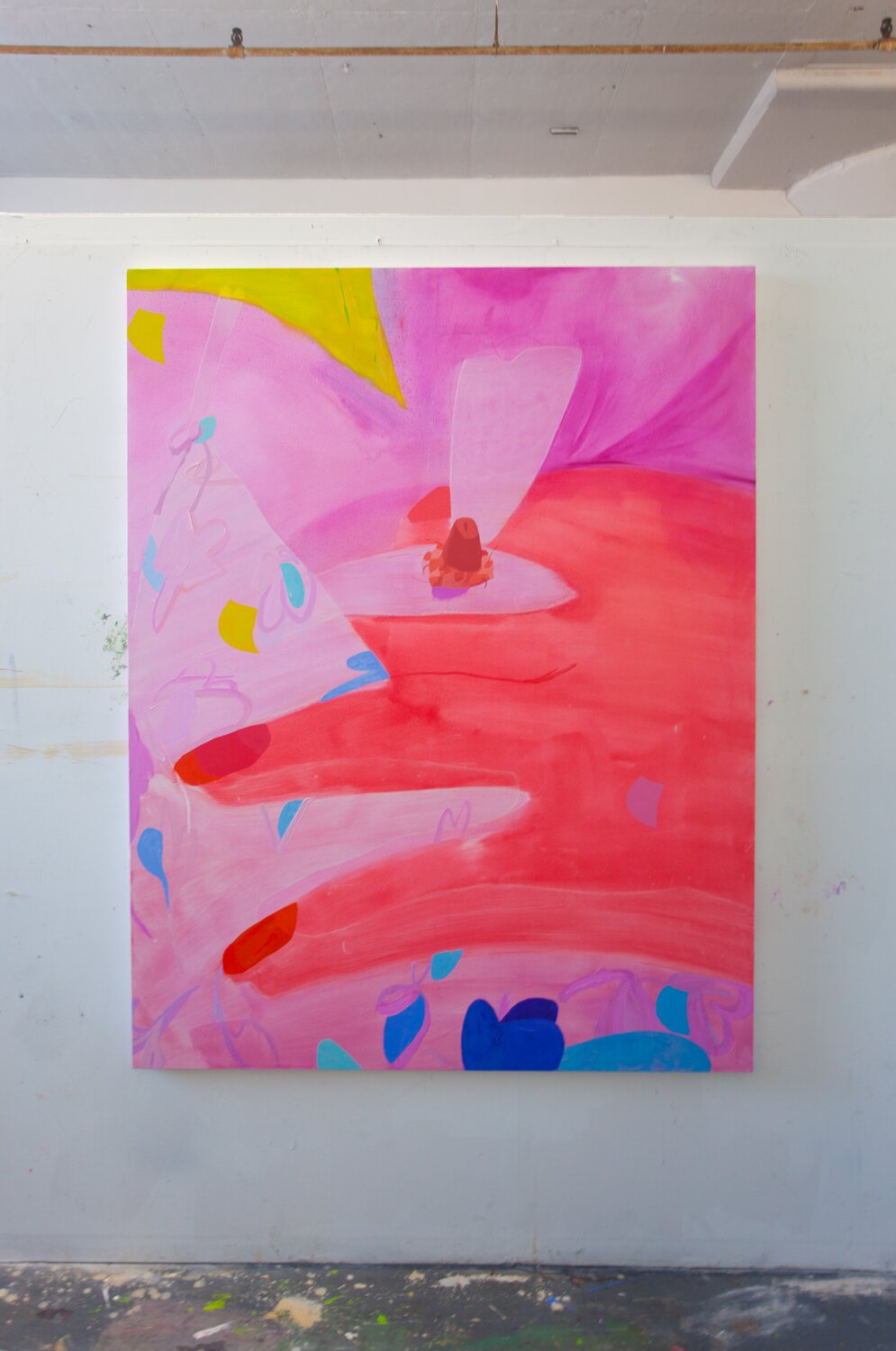
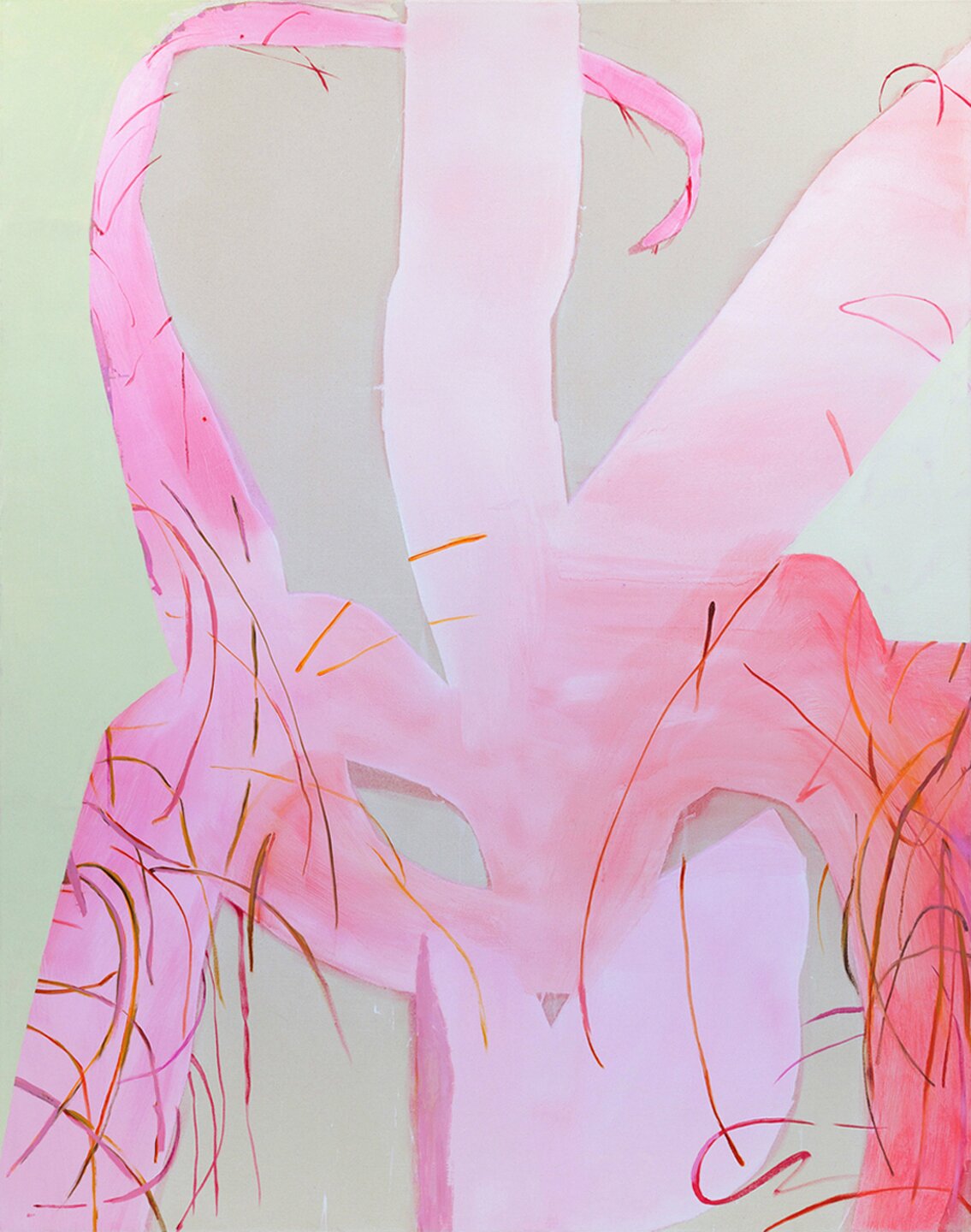
F:In several paintings the same image is used with different color palettes. Do you start from sketches or is it more organic where one painting leads to the next?
S:Lately I’ve been making pairs where I’ll use the same image twice. The pieces aren’t quite diptychs, but I do intend for them to be hung next to each other. I don’t think of this approach as switching palettes, although that’s part of it. My real aim is to complicate one sensory moment by depicting it with two different emotional tenors. Like in a recent pair, “Prickly Things” and “Blacklight”, someone is licking her own nipple, but each painting is a totally different recollection of the event. One’s bright, airy and dizzy, the other gritty, acidic and lurid. The image is conveyed in two different painting languages as well, with varying levels of legibility.
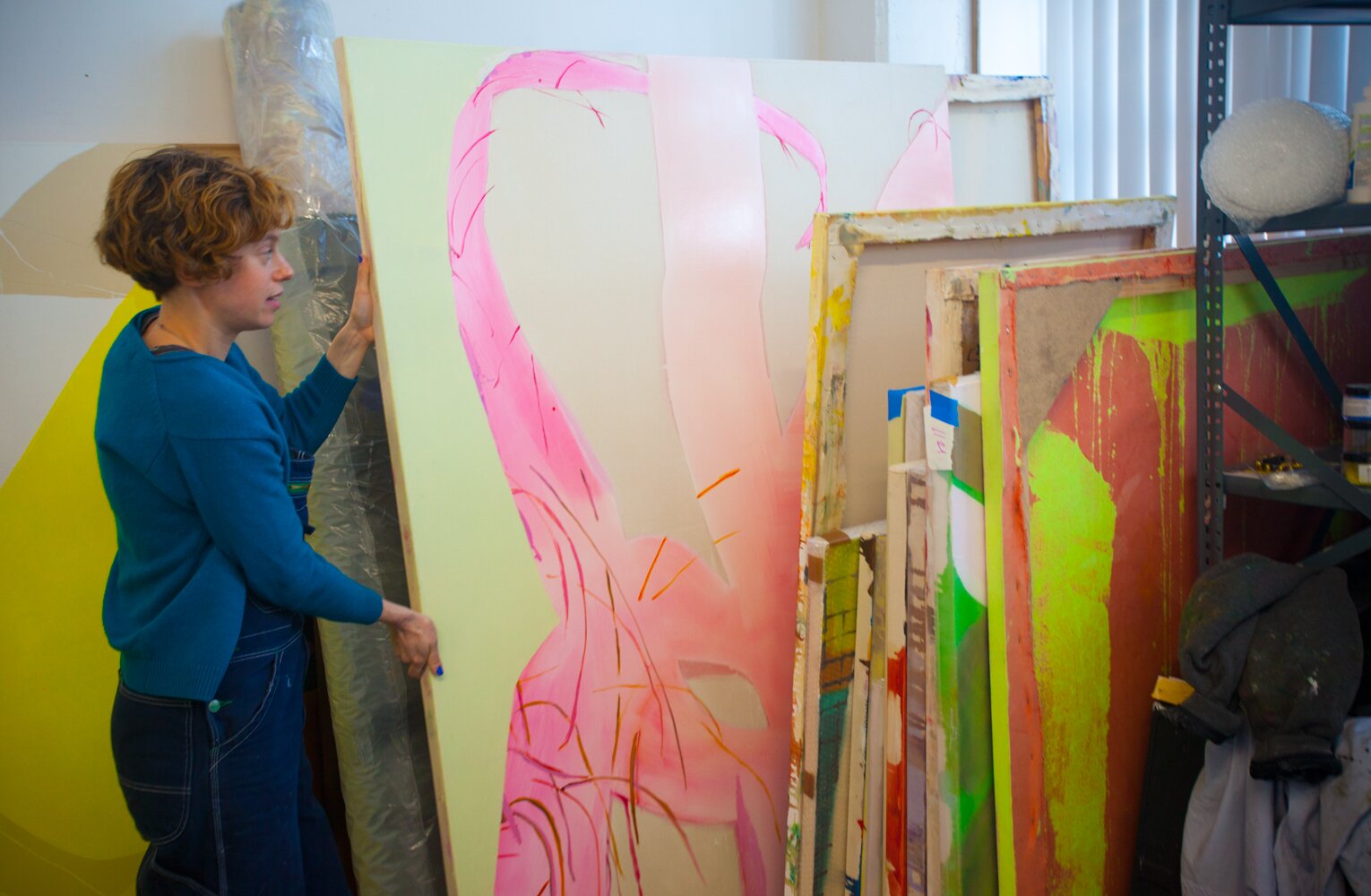
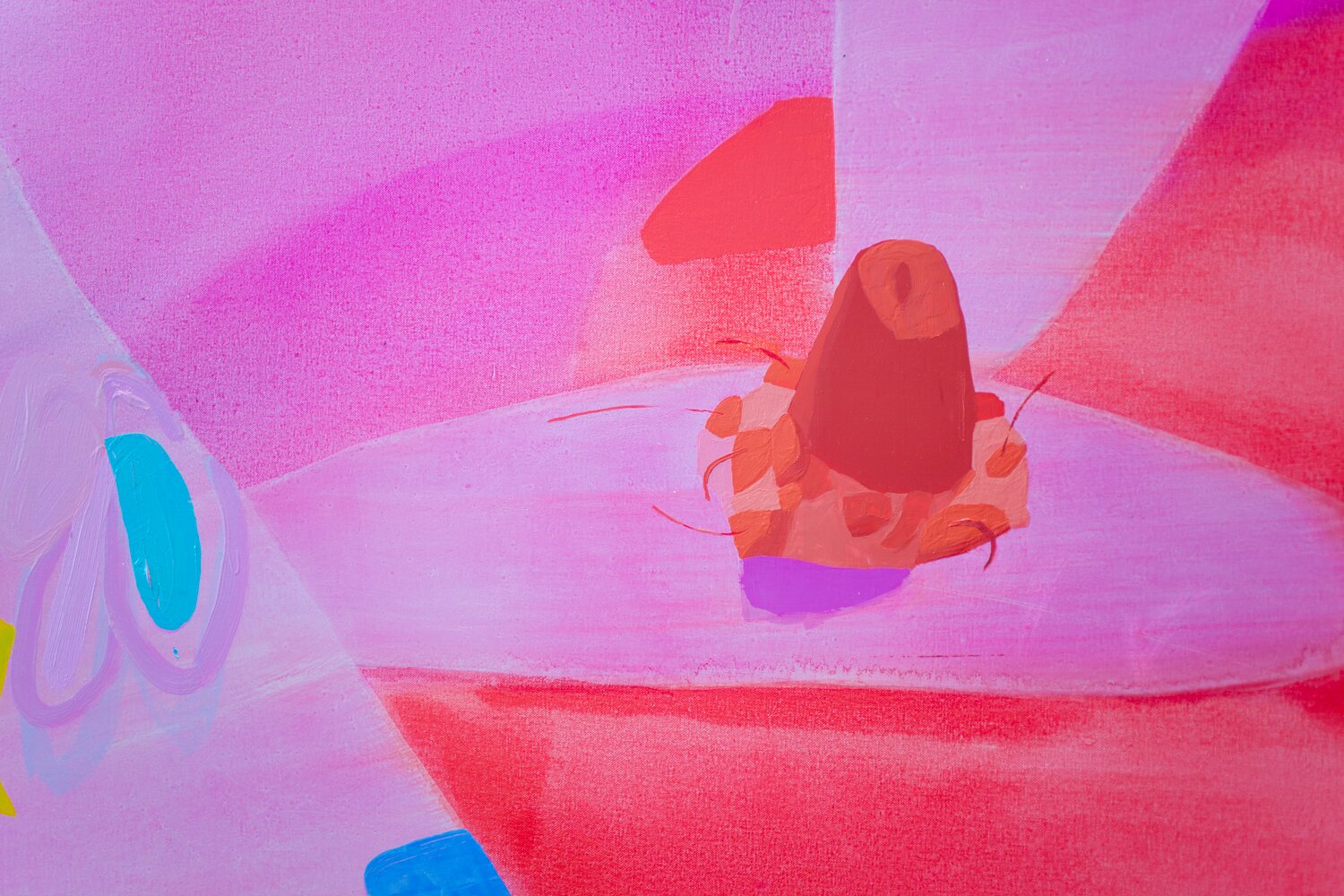
F:There’s a certain amount of sexuality and semi-autobiographical narratives built into the images. Can you talk about the subject matter?
S:I think a lot in analogies between the substance of paint and bodily fluid. Like oil paint being a physical oily skin, or poured pigment reading as blood, urine, semen… The physicality of paint and the experience of living inside a fleshy mass are intertwined for me. And I experience the dichotomy of my own body as both an object and agent when I’m in a state of heightened physical sensation. So, sexuality comes into play a lot.
I’m also painting from a distinctly feminine perspective, and in the real world sexuality and the sexual agency of women is often policed and controlled, put into neat categories. By painting between figuration and abstraction, I’m embracing ambiguity and the knowledge that sex is complex: calm, violent, pleasurable, sad, joyful… I think the unpredictable nature of oil paint can get closer to what real sexuality is like.
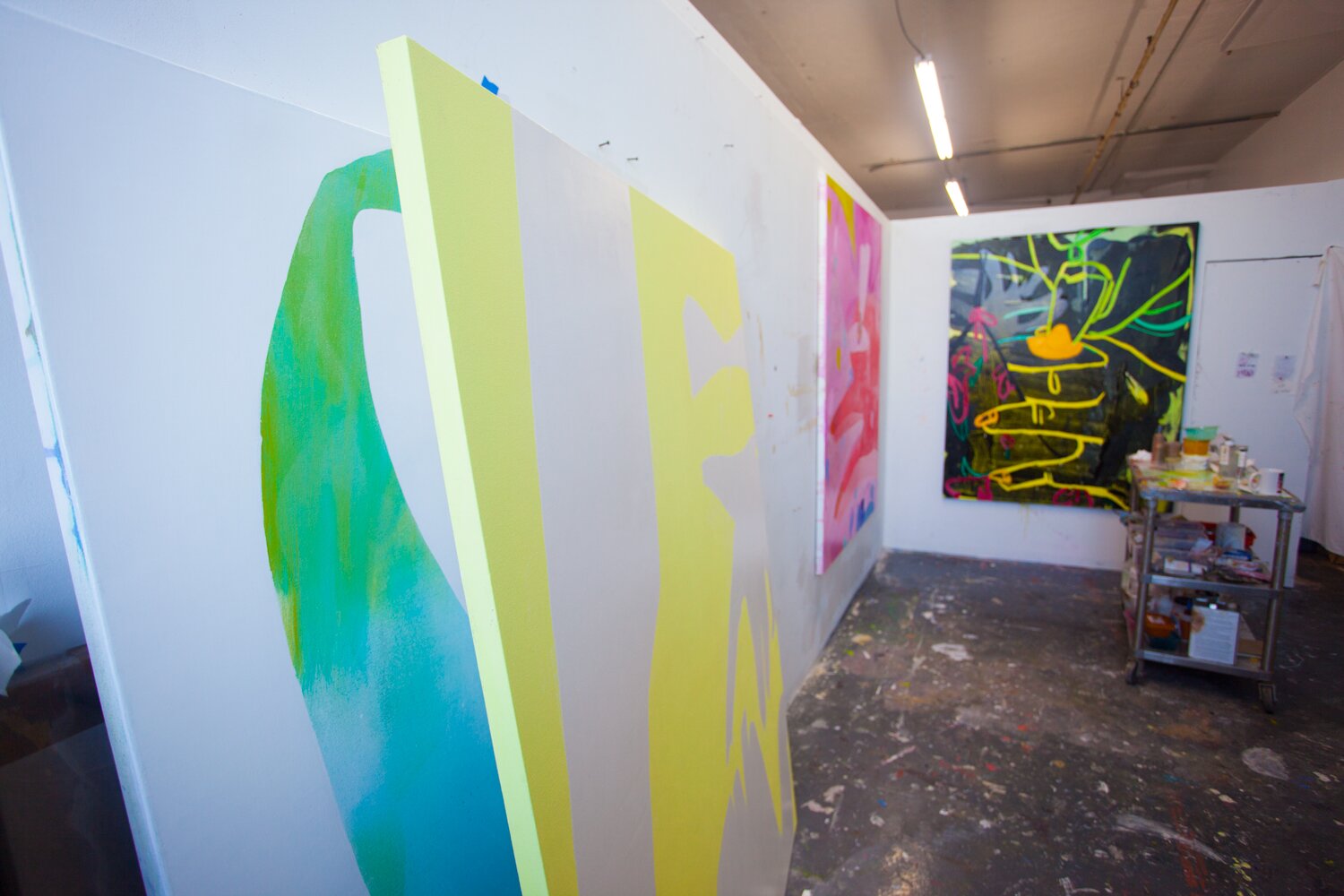
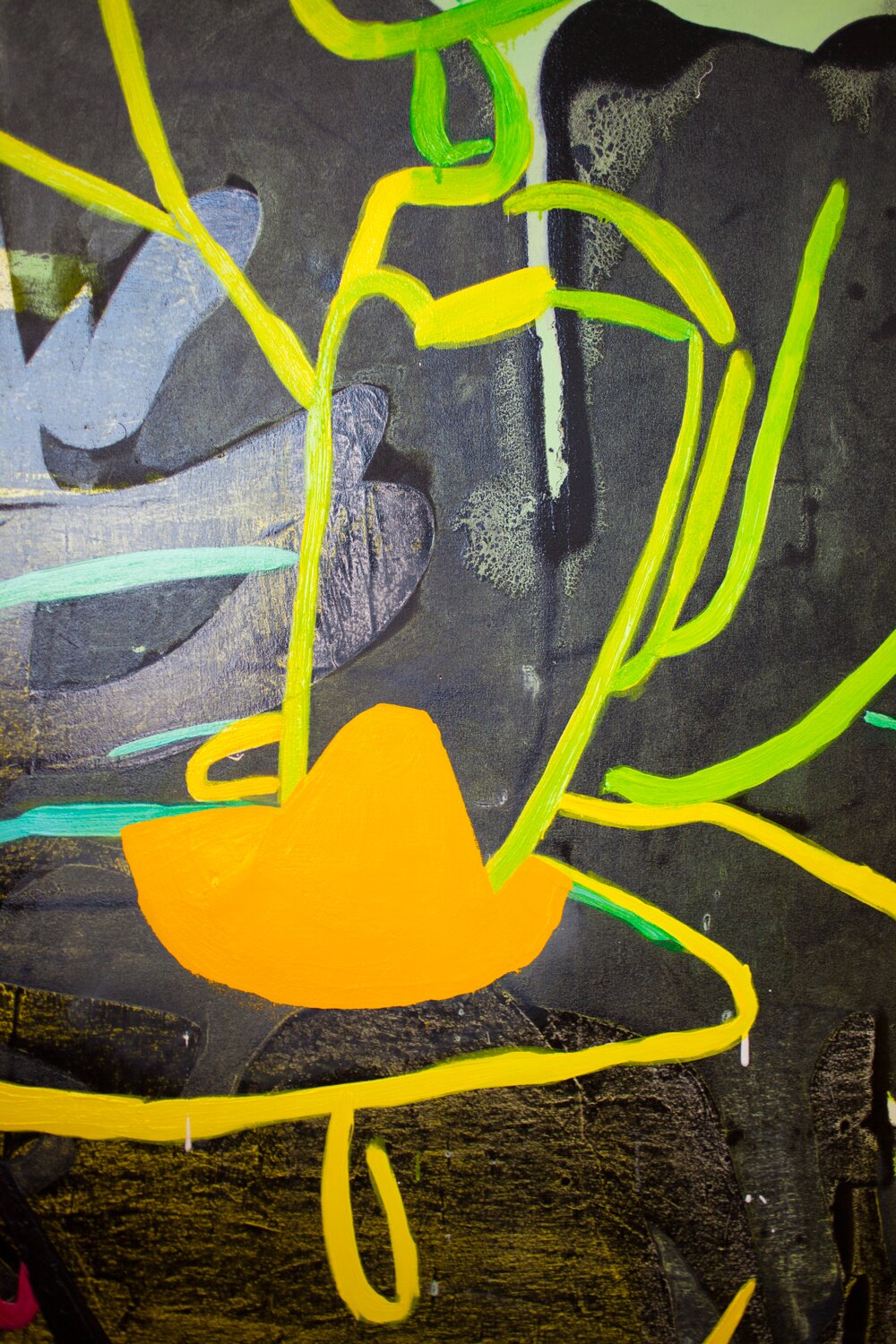
F:One thing I notice immediately is the vocabulary of marks you have built up on each canvas but something that also stands out is the different surface textures in the work. Can you talk a bit about the variety of surface texture in your work?
S:For a long time I thought of the canvas as completely analogous to the body, one surface equaled one person. I wanted to create surface depth within that body that could mimic this imagined person’s psychological depth. People have their own areas of openness, points of resistance, aspects of themselves that are on the surface, feelings that are more hidden. While I am less rigid in my compositions these days, I still want the surface itself to be analogous to the content, so that propels me to find new textures to respond to.
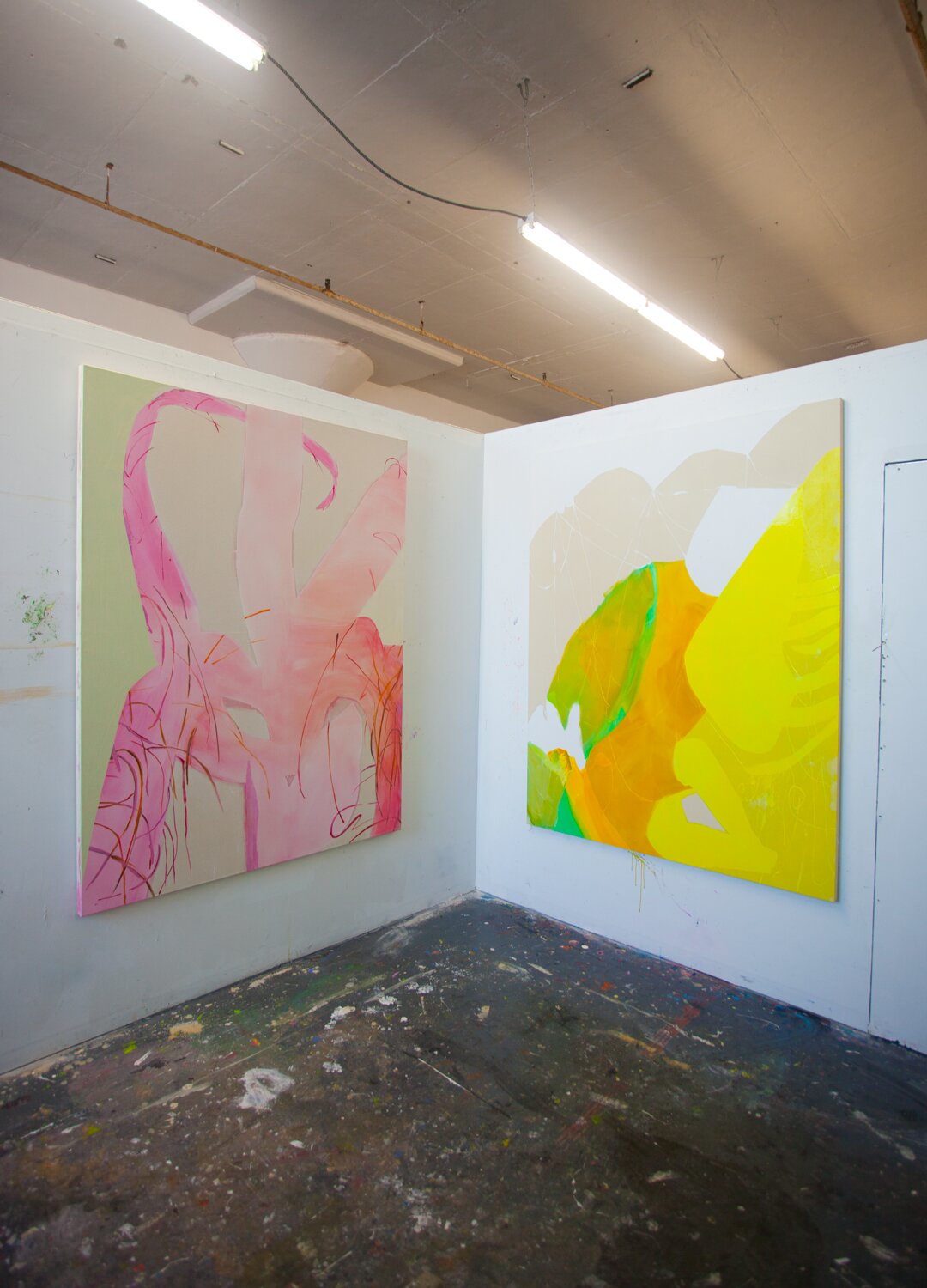
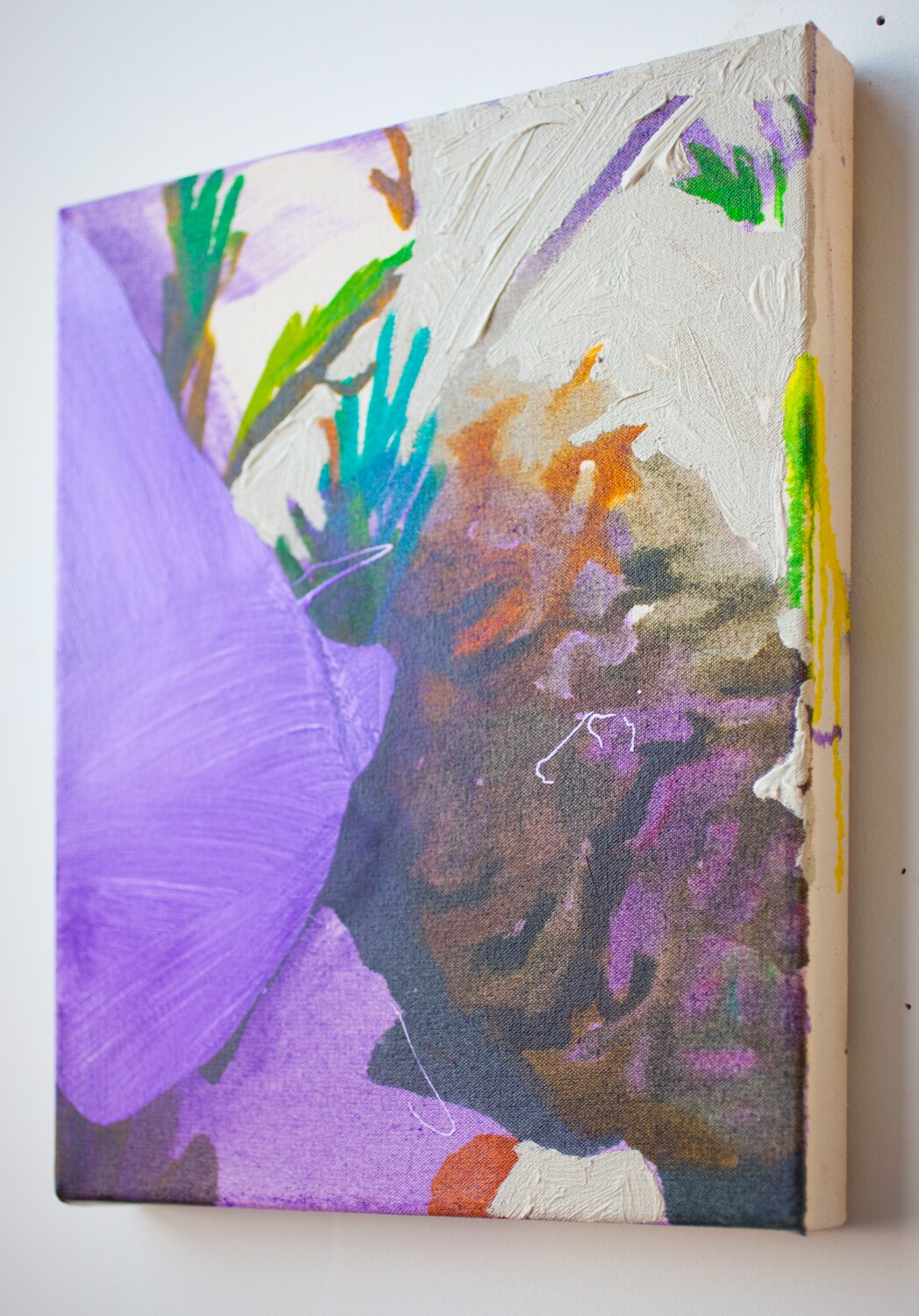
F:The scale of the painting is about the size of the body. Is scale a big factor in how your work is produced? When you work small vs large do you scale up the size of the marks?
S:I like working large these days, on painting that are taller and wider than me. This scale is full of possibility, like a wide open field. When I work small, I inevitably end up thinking of the paintings as objects, and so I’ll paint objects on them, eyes, hands, scissors, etc. I do like that on a small scale, if you don’t scale down the marks, suddenly one brush stroke takes up half the canvas.
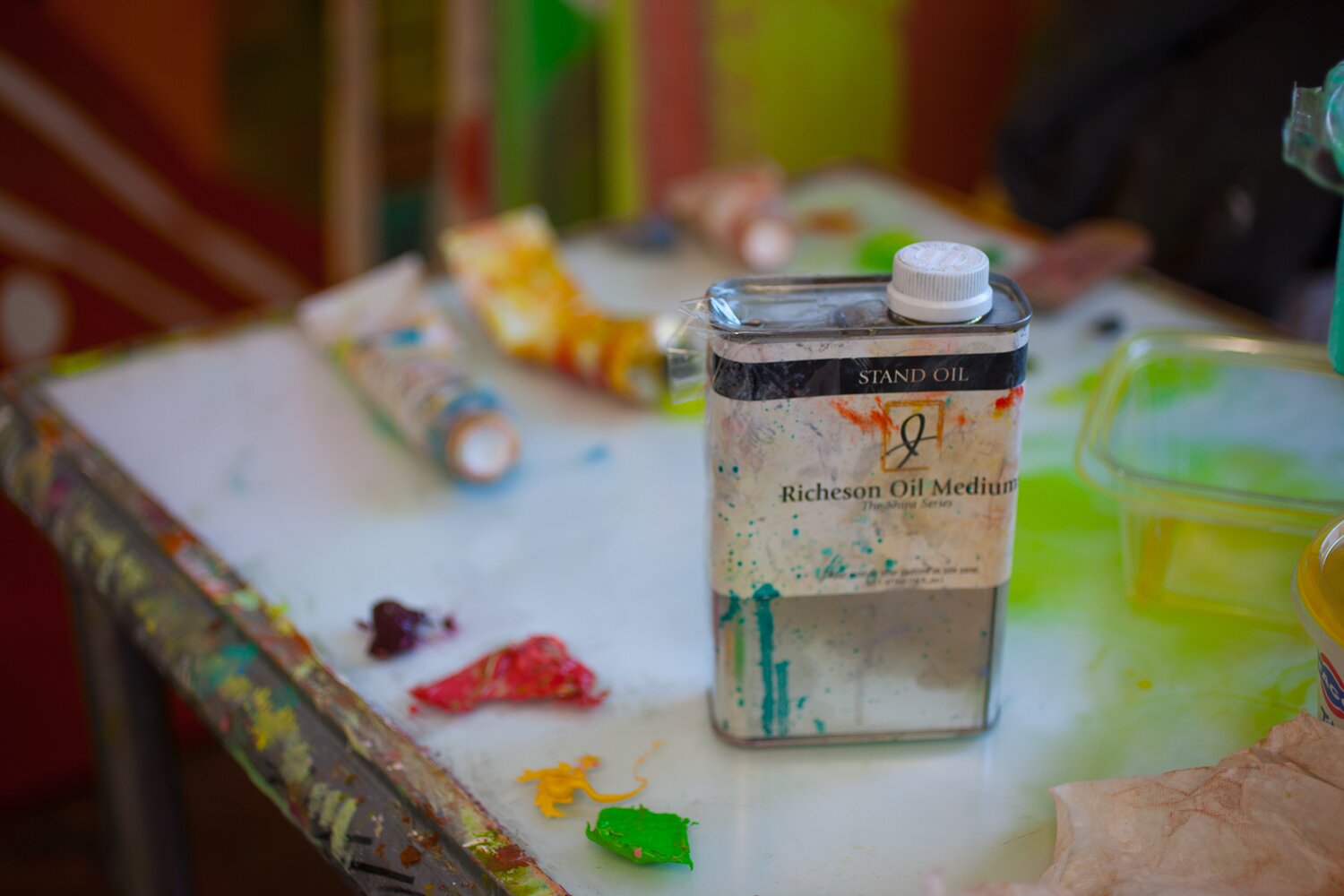
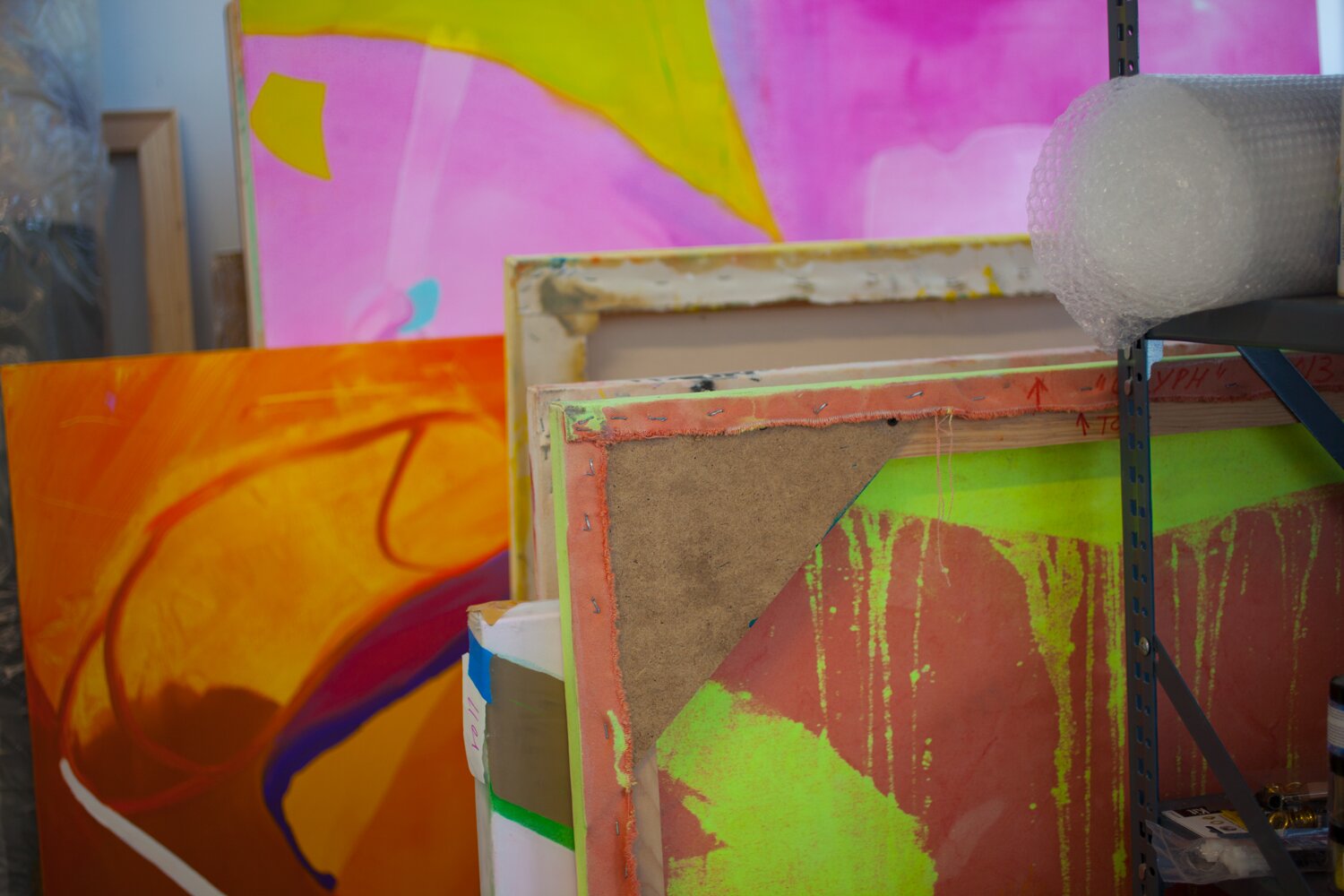
F:Can you describe your studio space?
S:I’ve got my own space with 8 ft. walls within a shared larger room. Its got great natural light, about 300 sq. ft., lots of folding things and movable parts so I can rearrange according to my work flow. I move things from the wall to the floor or to sawhorses a lot and work on many pieces at once, so things are constantly shifting position every day. A lot of times I’ll leave my paintings hanging upside down overnight so when I get back the next day I can see them with fresh eyes.
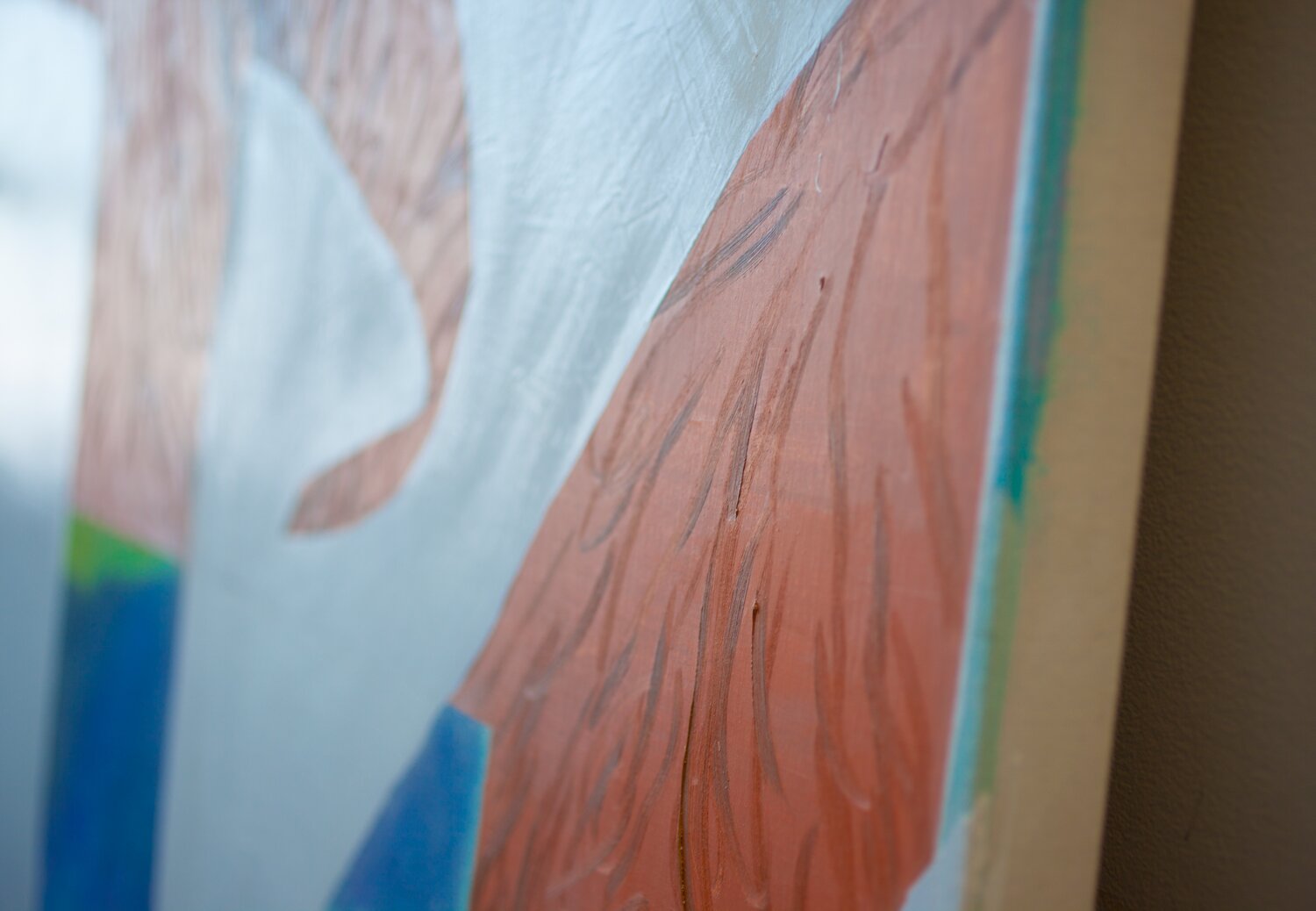
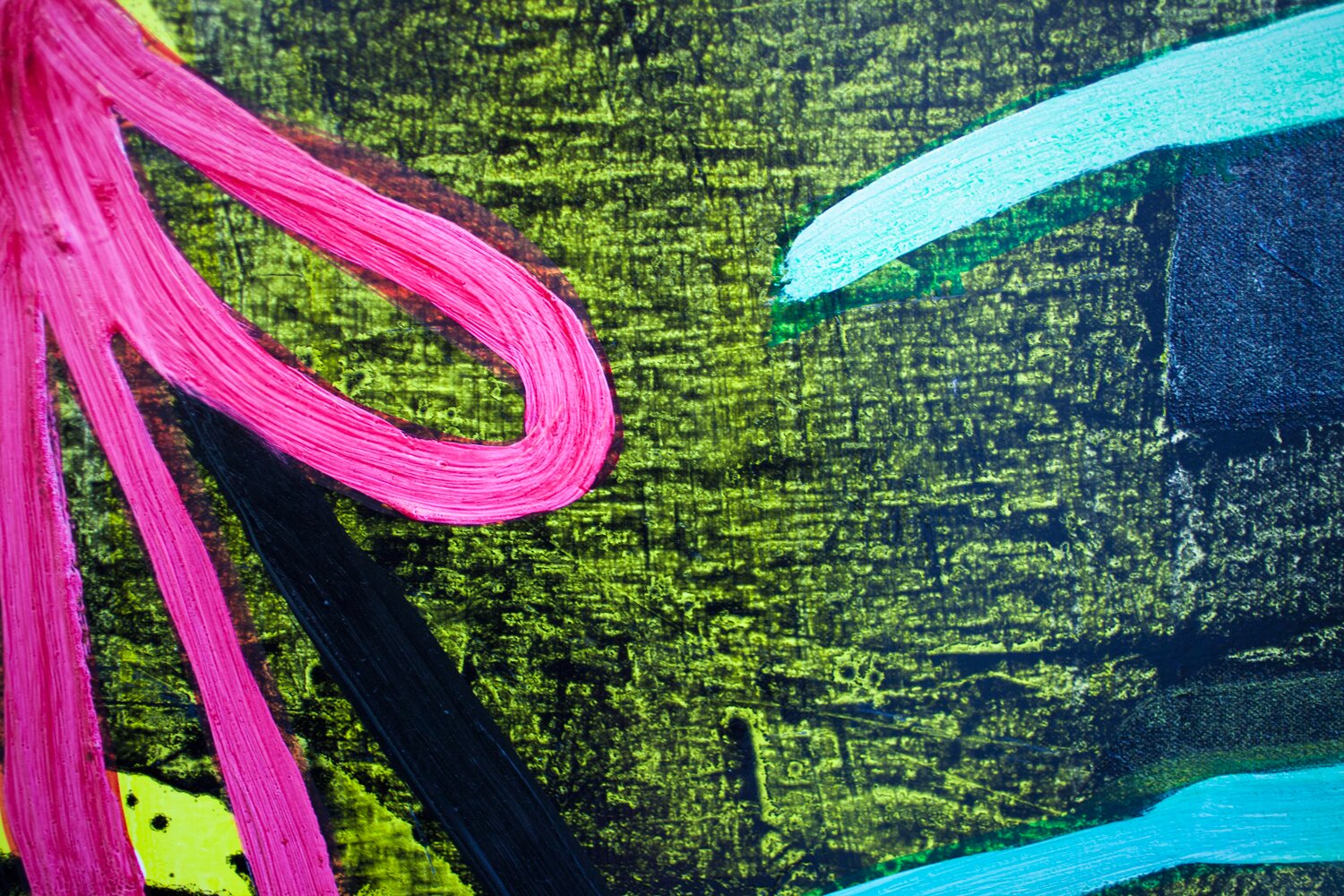
F:How long have you been here and what do you look for in a workspace?
S:I just moved in in September, and I’m subletting from a friend. It seemed like the perfect fit since it’s private enough that I can feel totally alone, but I’ve got inspiring, respectful studio mates who make awesome lunch dates. I’m pretty adaptable though, I look for privacy, wall space and light. After catching tons of colds this winter, I’m realizing that warmth should also be a factor!

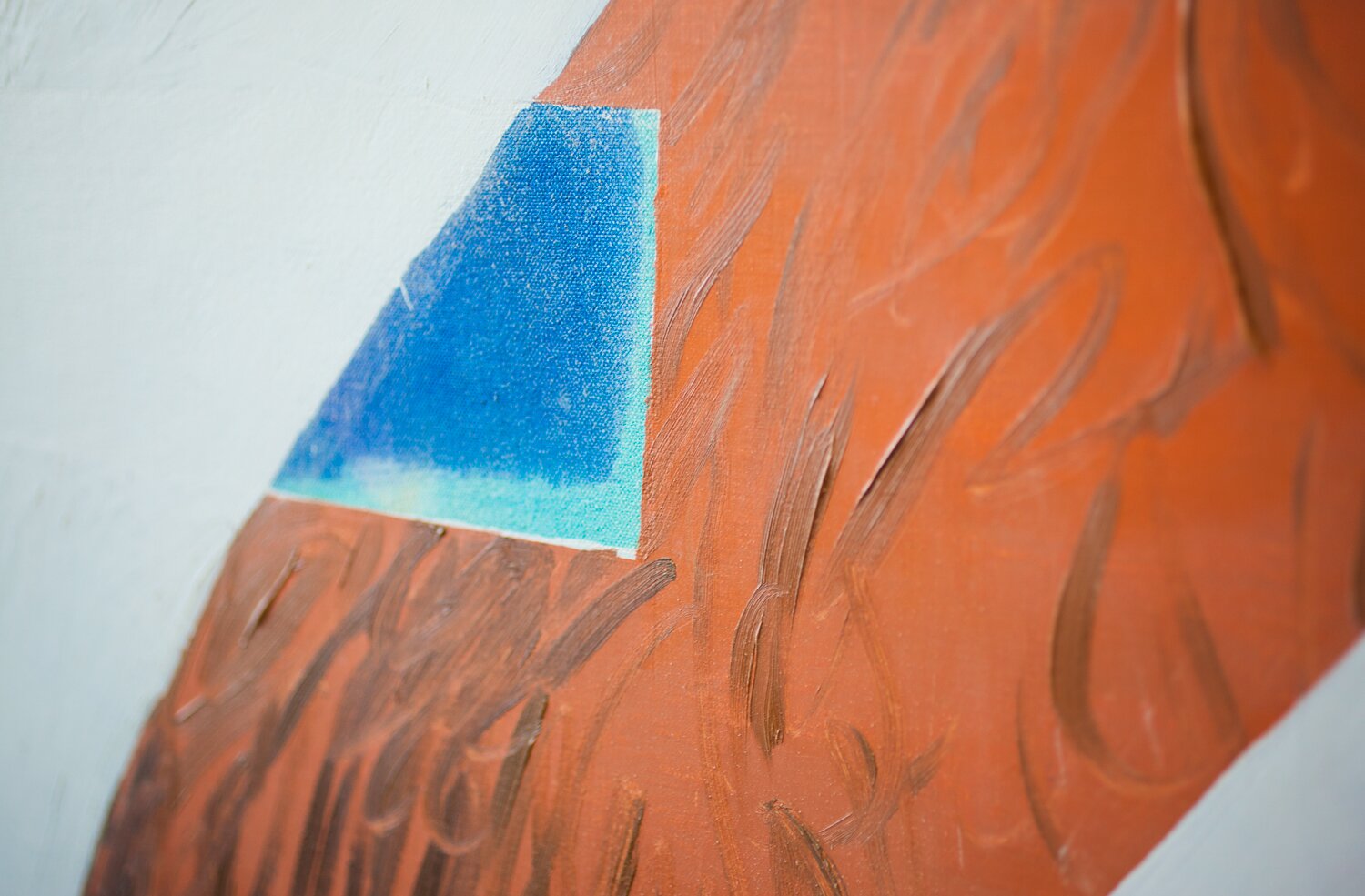
F:What does an average day in studio look like?
S:I usually come in the late morning and dick around a bit while I stare at whatever work’s in progress. I’ll drink tons of tea and eat lots of trail mix until I can finally put some music on and concentrate. Whenever I do settle in to paint, I end up getting so engaged that I’ll want to make a move on every single painting that’s in progress, so I’ll jump from one piece to the next. Ultimately I’ll end up staying kind of late and leave exhausted, emptied and starving.

F:What can we see from you in the future? What projects are underway?
S:I have an upcoming solo show, my first ever, at Stems Gallery in Brussels. That opens on June 2nd, and I’m finishing up the work for it now. I’m also doing a booth with Stems at NADA in New York in May.





